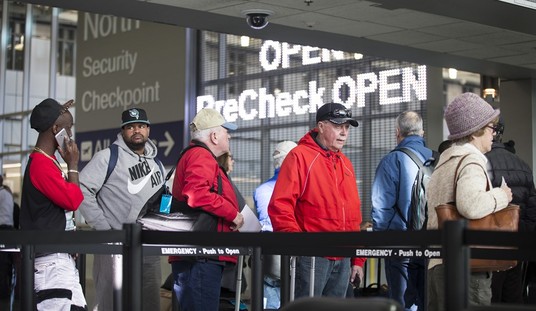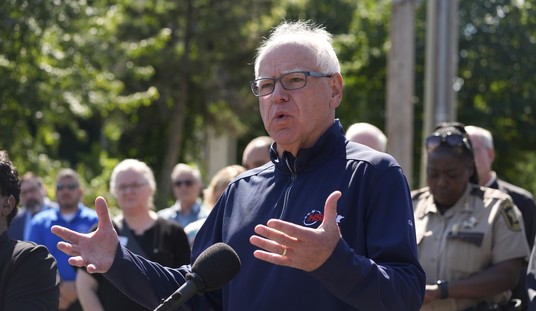Last night on Mark Levin’s radio show, Mr. Levin played a clip of Presidential candidate Donald Trump speaking with Field and Stream Magazine about federal control of lands in the Western United States. Asked if he would support transferring federal control of much of this land to states, Mr. Trump responded,
“That’s not good, because you want to keep the land great, and you don’t know what the state’s going to do with it. Are they going to sell it if they get into a little bit of trouble? I don’t think it should be sold. This is magnificent land and we have to be great stewards of this land. The hunters and the fisherman (sic) and all the different people who use this land.”
The controversy surrounding excessive federal ownership of America’s western lands, most recently highlighted by the illegal seizure of a federal wildlife refuge in Oregon by a group of armed protesters, is the latest reminder that America’s East/West divide is alive and well. The situation leaves most Easterners in a state of head scratching bewilderment. In contrast, their western counterparts – while unequivocally condemning Ammon Bundy’s actions – can empathize with his underlying motivation and frustration. Federal government control of more than 50 percent of the U.S. land mass in the 12 continental states from Colorado westward compared to federal management of a mere four percent of the East accounts for this “continental divide” in perception. Meanwhile, the bloated federal estate continues to exact a heavy environmental and economic toll on the West that is unnoticed by Americans in the eastern half of the country.
The issue of transferring select federal lands to the states confounds the typical inside the Beltway paradigm where issues tend to be classified as Left or Right. As Professor Eric Herzik, Political Science Department Chair at the University of Nevada at Reno observed recently on National Public Radio, “Non-Westerners come out here and they’re trying to view this from a liberal, conservative kind of lens, and no, this is a rural, urban, liberal, conservative, environmentalist – you’ve got multiple corners that you have to try to square.” Herzik describes it as a “tightrope.” Hawaii is a good example to underscore the political ambiguity of this issue. In the years before statehood, the U.S. federal government controlled significant portions of the Hawaiian Islands. Hawaii, hardly a bastion of conservatism ensured that with the enabling act granting the islands statehood explicitly included a provision transferring control of these then-federally-owned lands to state control.
To complicate things further, there are opposing voices within the divisions cited by Herzik. Some environmentalists view the federal government as a better, if not perfect, overseer of public lands in the West while others complain that federal mismanagement has led to overgrowth and the increased fuel loads that have made “catastrophic” the new normal for wildfire seasons. Wildfires destroy animal habitats; harm air quality to dangerous levels and by some estimates are responsible for up to three percent of America’s greenhouse gas emissions – all issues that are purportedly important to the environmental movement. Mismanagement of the federal estate is at least partially to blame for the uptick in wildfires, a fact recognized by western Americans and many environmental groups working in the West but largely unknown among Easterners.
Excessive federal control over western lands has an adverse impact on state economies. Western states are prevented from fully developing their land and resources and from collecting the property taxes that would accrue from full ownership of this territory. Many eastern taxpayers are unaware that they help to subsidize their western brethren through a complex and wholly inadequate system of federal programs such as PILT (Payments in Lieu of Taxes) and SRS (Secure Rural Schools). Illustrative of the divide bisecting our nation, most Westerners recognize these acronyms; most Easterners do not.
Back to Donald Trump and Mark Levin. Mr. Levin had this response to Trump’s assertion that transferring federal land control to the states is “not good”.
“Ladies and gentlemen, here we go again with another fundamental issue, why is it that if the federal government runs something, it will be protected and pristine, and so forth, but somehow the states are incapable.
“Is that what the 10th Amendment is all about? Is that what federalism is all about?
“The federal government should own all the land because only the federal government can keep the land properly?”
The American Legislative Exchange Council (ALEC) – a nonpartisan, nonprofit policy organization – agrees with Mr. Levin that federal control of lands IS a fundamental issue, and ALEC is committed to raising the issue of transfer of federal lands, adopting it as one of the four action items of the Center to Restore the Balance of Government. In 2015, ALEC published a report concluding that the states would serve as superior environmental and economic stewards of the lands within their borders. These efforts and those of likeminded policy organizations seem to be gaining traction across the country. Presidential candidates include it in their stump speeches; Congress is exploring actions that would partially rectify the problem and the national media is taking notice.
Control over the territory within a state’s boundaries is federalism at its most basic and is a model that worked well for America during most of the nineteenth century, one that Canada continues to follow and the optimal one for the United States today. The entire nation benefits from the bridging of this East/West divide.
Karla Jones is director of International Relations and Federalism policy at the American Legislative Exchange Council (ALEC).













Join the conversation as a VIP Member